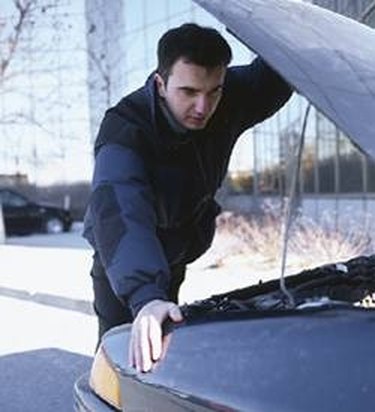Things You'll Need
Long-handled socket wrench
Ratchet
"Breaker" or "cheater" bar
Socket set

Believe it or not, a completely "seized" engine is actually a pretty rare thing these days. Unless it's been sitting outside in a junkyard for years or you've overheated it while lubricating the bearings with air at 6,000 rpm, odds are pretty good that your engine isn't irreparably locked up. It could, however, be just bound up enough that a starter won't turn it over; in which case, you'll have to take diagnosis of the condition into your own hands.
Step 1
Put the emergency brake on and shift the car into neutral.
Step 2
Open the hood and locate the crankshaft pulley on your engine. The crankshaft pulley is on the bottom-front of your engine, and usually the bottommost pulley. It drives the entire belt system.
Step 3
Select a socket that fits the nut on the bolt in the center of the crankshaft pulley. Set your ratchet to "tighten," so the ratchet as it moves will be attempting to turn the nut in a clockwise direction. Fit the socket over the crankshaft bolt, and fit a long "breaker bar" or pipe to the end of the ratchet for more leverage.
Step 4
Try to turn the crankshaft pulley in a clockwise direction, using the ratchet on the center bolt. If the pulley turns, your engine is not seized. If the pulley does not turn, your engine is seized -- likely because of either pistons seized in the bores, or the crankshaft seized in the main bearings.
Tip
If your engine turns a little bit, and no further, try removing all of the spark plugs and trying again. This will relieve compression in the cylinders, allowing you to get a better estimate of the actual mechanical resistance in the assembly. If it still doesn't turn, try squirting an ounce or so of penetrating oil into each spark plug hole, and then waiting about 10 minutes. If the engine turns over now, you haven't solved the problem, but you've at least tracked the source of the seizing down to the piston rings and cylinder bores. If this is the case, you may be looking at a full rebuild with new pistons, piston rings and engine block machining. It's not unusual for junkyard engines or those left out in the elements for a long time to seize up due to cylinder bore rust.